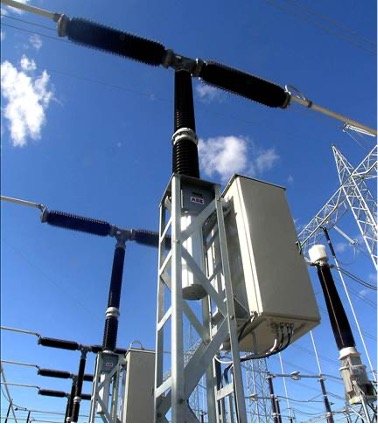To transport energy in a sustainable way across countries, electric power grids play a central role. Currently the switches in high voltage grids operate on sulfur hexafluoride gas (SF6). This is an excellent electric insulator, but the worst greenhouse gas known. To investigate eco-friendly alternative gases, CWI and Eindhoven University of Technology now start the new ‘Green Sparks’ project with Hitachi Energy Ltd as the main industrial partner. CWI coordinates the new project and models electric discharges in different gases, and TU/e performs experiments on these discharges.
The transport of electric energy over long distances is energetically most efficient at high voltages, and a large extension of the high voltage grid is therefore expected in the coming decades. The energy flow within a grid is controlled by switches. They operate by moving two electrodes apart, creating an arc in the buffer gas, but this arc should be extinguished in a controllable manner. Sulfur hexafluoride (SF6) is an excellent gas for insulation and arc quenching, and it is today’s standard. But it is also the strongest greenhouse gas known, because it strongly absorbs infrared radiation in the atmosphere where it has a lifetime of thousands of years. Therefore, it should be replaced by eco-friendly alternative gases with low impact on the global warming of the atmosphere. Within the project, the team will use and extend their vast expertise in generating, measuring and modelling electric discharges as they also appear in air as sparks and lightning. They will improve the fundamental understanding of discharges in different gases and, in particular, in eco-friendly alternatives of SF6.

The project received 1 million euro from NWO’s Open Technology Programme (OTP) plus financial matching from the industrial partners, for 3 PhD students, a postdoc and substantial experimental investments. The OTP programme provides funding for excellent research, with a view to potential application of the results. It gives companies and other organisations a low-threshold way to join scientific research that should lead to applicable knowledge. The new ‘Green Sparks’ project is the third in a series (after ‘Creeping Sparks’ and ‘Let CO2 spark!’) with the partners CWI and TU/e and with the main industrial stakeholder ABB Ltd, now Hitachi Energy Ltd. The project starts on 1 February 2024.
Green Sparks’ principal investigator is Ute Ebert, who is head of CWI’s Multiscale Dynamics research group and a professor at Eindhoven University of Technology. Jannis Teunissen is a senior researcher in the group who supervises the computational part of the project. Sander Nijdam and Tom Huiskamp supervise the experimental work in Eindhoven.
Lower image: High voltage switch. Picture: Hitachi Energy Ltd.
